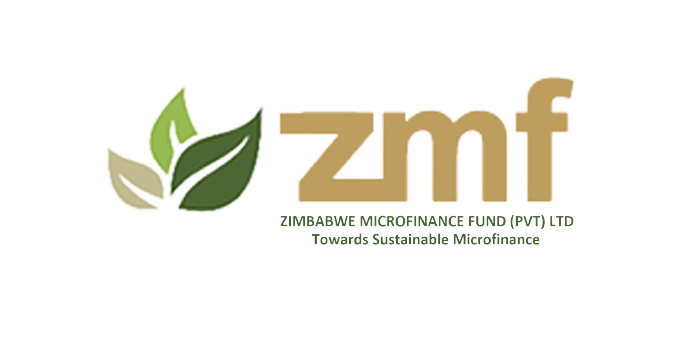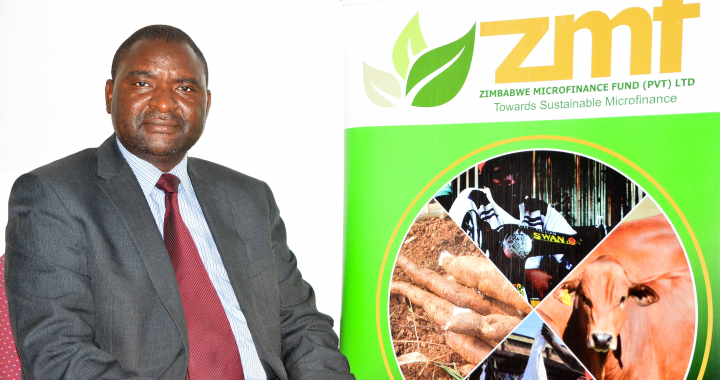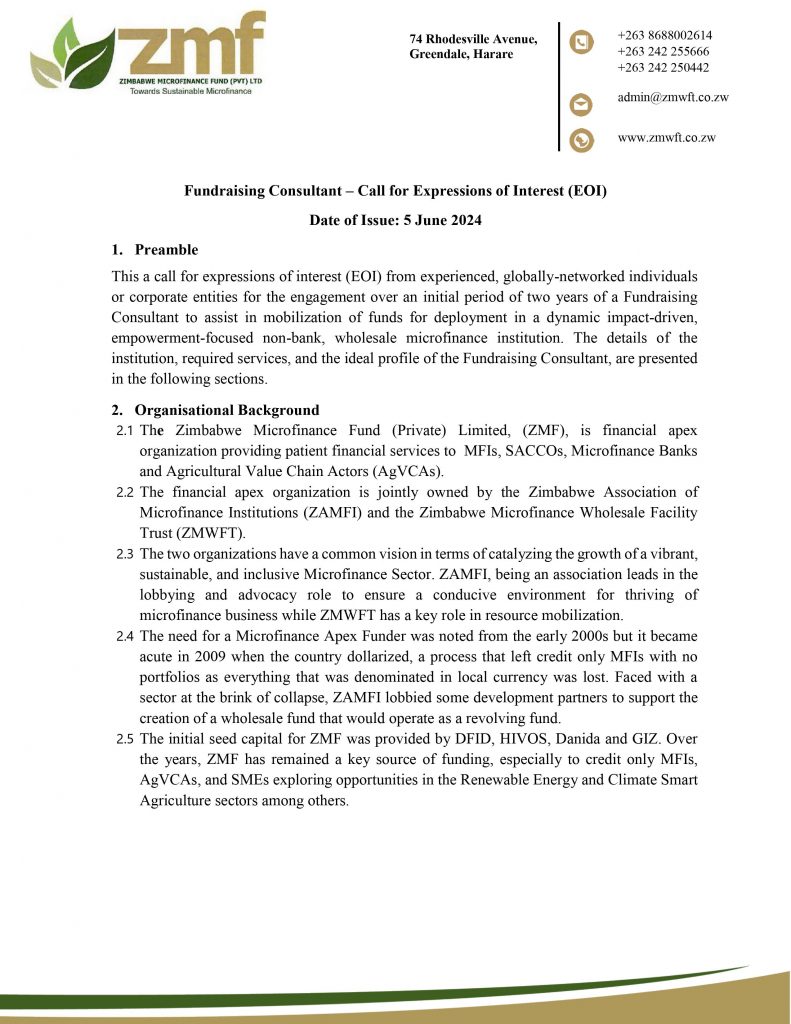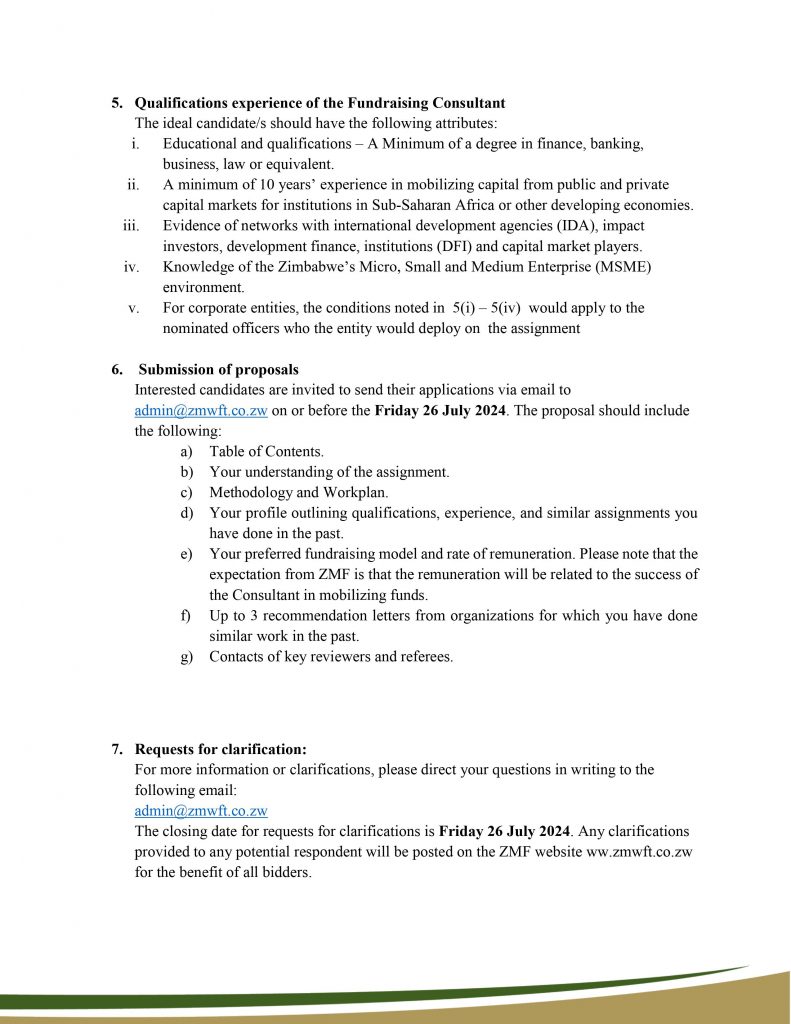Fostering responsible loan pricing in microfinance
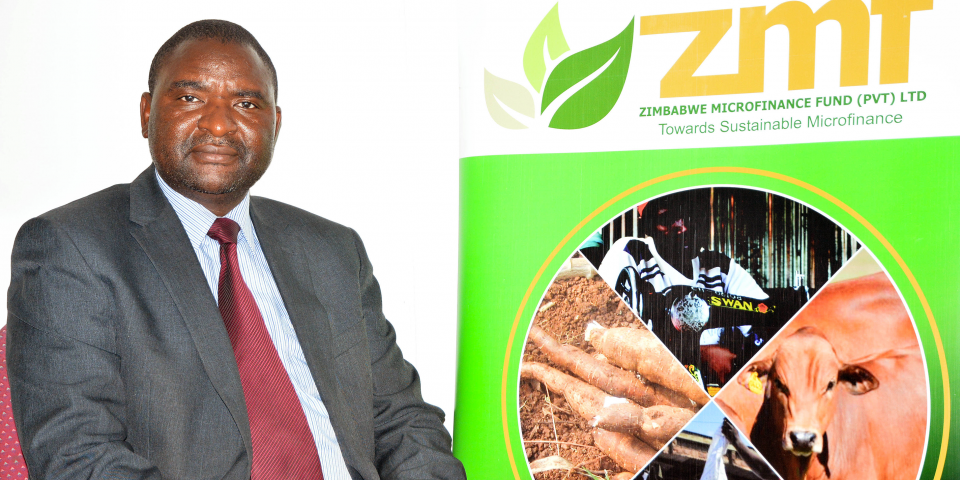
February 2, 2017
In this third instalment, the spotlight is on the Zimbabwe Microfinance Fund (ZMF), a financial apex body. Brian Zimunhu (BZ), the Fund’s founding managing director talks to NewsDay financial columnist Omen Nyevero Muza (ONM) about the rationale of setting up the ZMF, its evolvement over the years as well as its current challenges and opportunities.
Below are excerpts of the interview.
ONM: What was the rationale of setting up the Zimbabwe Microfinance Fund (ZMF)?
BZ: The ZMF is a financial apex body formed in 2011 with the objective of providing wholesale lending capital to financial service providers (FSPs) such as microfinance institutions (MFIs), microfinance banks, agricultural value chain actors and savings and Credit Co-operative Societies (Saccos) for retailing to micro, small and medium enterprises (MSMEs).
ONM: Which key stakeholders were instrumental in getting the fund up and running?
BZ: The key stakeholders in question include: Zimbabwe Association of Microfinance institutions (Zamfi); development partners such as DFID, Hivos, GIZ and Danida, as well as the Reserve Bank of Zimbabwe (RBZ).
ONM: Please briefly outline the evolution of the fund since inception — its brief history, so to speak.
BZ: The ZMF commenced business in 2012 lending to its partners through a third party financial institution.
ONM: Would you care to disclose the identity of the third party financial institution?
BZ: Of course, this was a “partnership for success” with CBZ Bank. Over the years, ZMF has built adequate internal capacity and all business processes have now been internalised. The fund has since grown from $2 million as of 2012 to $12 million as at end of December 2016. As a revolving fund, ZMF has been able to disburse loans upwards of $17 million from inception to December 2016. This has been achieved through 25 partner FSPs. More than 60% of these loans have gone to women borrowers while an average of 35% has gone to rural clients.
ONM: What sort of borrowers does the ZMF’s lending programmes target?
BZ: The key target audience are financial service providers and value chain actors, who are into developmental lending serving micro, small and medium enterprises that are committed to improving the socio-economic and environmental well-being of the communities they serve.
ONM: What are the ZMF’s sources of funding?
BZ: Donated equity from social/development investors and debt financing.
ONM: Please outline the interest rates and fees that the ZMF charges for its loans.
BZ: Our interest rates are in the range of 7-13% per annum and we charge establishment fees of up to 3% of loan amount.
ONM: What are your key considerations in determining this interest rate and fee structure?
BZ: The fund considers the risk profile of partner financial service providers, the cost of capital, area of funds deployment and use of funds. Benchmarking against market rates is also a key consideration.
ONM: By area of funds deployment, do you mean physical location or sector? Please explain.
BZ: I mean physical location and indeed there is need to clarify this. So, as a fund, we are very clear and alive to the fact that, while financial exclusion is most rampant in rural areas, servicing clients from those locations is both more expensive and highly risky. As a way of incentivising and cushioning FSPs extending the boundaries of financial inclusion by serving the rural and supposedly risky clients, ZMF tends to lean to the lower end of the interest rate band.
ONM: What was the fund’s exposure like in sectoral terms at the end of 2016?
BZ: As of end of 2016, the fund had a total exposure of $10m to the following sectors: distribution (62%), agriculture (29%), manufacturing (4%), services (3%) and other (2%).
ONM: What would you say have been the key impacts of your funding interventions on the target market?
BZ: Among the key impacts of our funding are growth in enterprise lending as opposed to mere consumer lending among the ZMF partners, improved operational self-sufficiency among partner financial service providers and increased rural reach and access to finance by women. We are also fostering responsible loan pricing and have sparked growing interest from offshore funders. ZMF alone may never be able to meet the ever-increasing funding needs of the sector and funding from offshore sources will help in keeping the country’s MSMEs oiled but also shoring up the levels of the much-needed foreign direct investments.
ONM: Having been operational for close to five years, what would you say have been the ZMF’s key constraints?
BZ: At inception, the challenge was slow uptake of funds as FSPs lacked immediate capacity to handle big loans from the fund; interestingly, the challenge now has become limited funding in the face of increasing demand for loans by partner FSPs. The challenging economic environment, which has significantly increased the level of inherent credit risk, is another key constraint.
ONM: And opportunities? There must be some opportunities.
BZ: There are several opportunities, including national recognition of microfinance as a key pillar of the national financial inclusion strategy. The initiatives by the RBZ and other development partners to build strong financial infrastructure such as the credit and collateral registry will go a long way in enhancing risk management and promoting financial inclusion. There are opportunities for funding climate smart technologies to help microenterprises and households cope with or mitigate the effects of climate change. We also see increasing demands for loans and increased absorption capacity amongst our existing clients.
ONM: Since the ZMF is licensed as credit-only MFI with capacity to do retail loans, have you ever considered going that route?
BZ: ZMF’s business model is to reach out and positively impact on as many Bottom of the pyramid (BoP) clients as possible working through partner FSPs and value chain actors. Direct lending to retail clients is not part of our current strategy.
